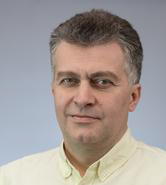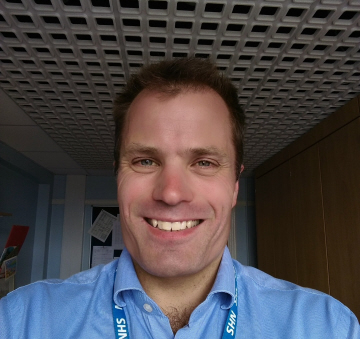For the 150 to 200 children in the UK who are on dialysis for kidney disease, getting their fluid balance right depends on being able to determine their target weight, or their weight without excess fluid, as accurately as possible. At present this is more of an art than a science, relying on clinical judgement based on factors such as the child’s blood pressure, clinical examination and symptoms at dialysis.
Dr Wesley Hayes, Consultant Paediatric Nephrologist at University Hospitals Bristol NHS Foundation Trust, challenged University of Bristol researchers to come up with a solution under the EBI Research for Health Challenge Scheme. A team of signal processing researchers, led by Dr Alin Achim at the Merchant Venturers School of Engineering, came up with a grant-winning proposal.
Studies in adult dialysis patients had already shown that chest ultrasound scans could give a sensitive measure of fluid overload by detecting fluid in the lungs. This is because of the presence in ultrasound images of vertical lines, called B-lines, whose number can be related to the amount of fluid in and around the tissue cells. But automatically quantifying the number of B-lines posed a significant challenge and had not been tried in children.
Dr Achim and his team proposed using advanced computer-assisted techniques to enhance ultrasound quality and extract information to quantify the numbers of B-lines in the lungs of children on dialysis.
The project team, which included Professor David Bull and Dr Nantheera Anantrasirichai, worked in collaboration with Dr Hayes and Dr Marco Allinovi at the Bristol Royal Hospital for Children, who provided ultrasound data and helped validate the results.
The researchers developed a method for taking an ultrasound image of a child’s lungs, detecting all straight lines present and distinguishing B-lines from other types of line to give a quantitative assessment. This gives clinicians a much more accurate basis for determining how much fluid they should remove in children in dialysis.
The team’s work included a novel technique for simultaneous line detection and deconvolution in ultrasound images. Results showed that their method outperformed existing approaches for B-line detection in lung ultrasound images by up to 50%.
The researchers published their results at the 2016 IEEE International Ultrasonics Symposium and at the IEEE International Conference on Acoustics, Speech and Signal Processing. A paper has also been submitted to the journal IEEE Transactions on Medical Imaging.
Dr Achim and his collaborator, Dr Hayes (who is now at Great Ormond Street Hospital London), have joined in an EU Marie Curie Innovative Training Network submission to take their work forward, in partnership with the Swiss Group for Clinical Cancer Research. A joint submission is also planned with Imperial College to the Engineering and Physical Sciences Research Council. The team is seeking to patent the approaches with a view to commercial development.
Dr Achim said: ‘This work has provided a novel solution to quantify B-lines in lung ultrasound images of children on dialysis. Thanks to this EBI award we have taken an important first step towards developing a fully automated system for quantifying fluid overload that could improve dialysis and help reduce cardiovascular risk in this group of children.’

